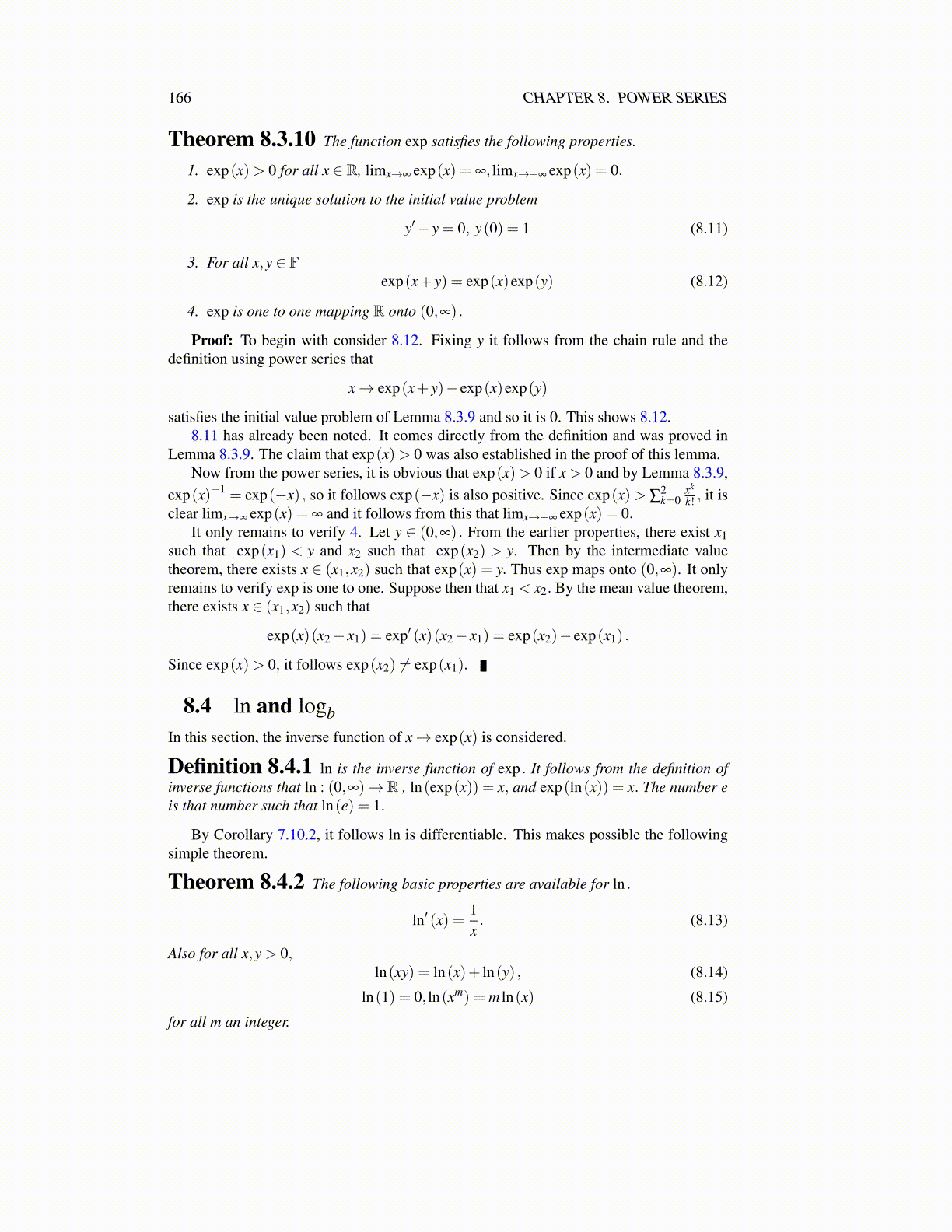
166 CHAPTER 8. POWER SERIES
Proof: blogb(x) ≡ exp(ln(b) logb (x)) = exp(
ln(b) ln(x)ln(b)
)= exp(ln(x)) = x and also
logb (bx) = ln(bx)
ln(b) = x ln(b)ln(b) = x. This proves 1.
Now consider 2.
logb (xy) =ln(xy)ln(b)
=ln(x)ln(b)
+ln(y)ln(b)
= logb (x)+ logb (y) .
Finally, logb (xα) = ln(xα )
ln(b) = αln(x)ln(b) = α logb (x) .
8.5 The Complex ExponentialWhat does eix mean? Here i2 =−1. Recall the complex numbers are of the form a+ ib andare identified as points in the plane. For f (x) = eix, you would want
f ′′ (x) = i2 f (x) =− f (x)
so f ′′ (x)+ f (x) = 0. Also, you would want f (0) = e0 = 1, f ′ (0) = ie0 = i. One solutionto these conditions is f (x) = cos(x)+ isin(x) . Is it the only solution? Suppose g(x) isanother solution. Consider u(x) = f (x)−g(x) . Then it follows
u′′ (x)+u(x) = 0, u(0) = 0 = u′ (0) .
Thus both Reu and Imu solve the differential equation and 0 initial condition. By Lemma8.3.3 both Reu and Imu are equal to 0. Thus the above is the only solution. Recall byDe’Moivre’s theorem
(cosx+ isinx)n = cos(nx)+ isin(nx)
for any integer n and so(eix)n
= einx.If you have a complex number x+ iy, you can write it as
√x2 + y2
(x√
x2 + y2+ i
y√x2 + y2
)
and then note that(
x√x2+y2
, y√x2+y2
)is a point on the unit circle. Thus there is θ such that
this ordered pair is (cosθ ,sinθ) and so if you let r =√
x2 + y2, the distance to the origin,the complex number can be written in the form r (cosθ + isinθ) . From the above, this isof the form reiθ . This is called the polar form of a complex number. You should verify thatwith this convention, reiθ r̂eiθ̂ = rr̂ei(θ+θ̂). This reduces to using the trig identities for thecosine and sine of the sum of two angles.
In particular, this shows how to parametrize a circle in C centered at 0 which has radiusr. It is just γ (t) = reit where t ∈ [0,2π]. By this is meant that as t moves from 0 to 2π, thepoint γ (t) is on the circle of radius r and moves in the counter clockwise direction over thecircle.
8.6 The Binomial TheoremThe following is a very important example known as the binomial series. It was discoveredby Newton.